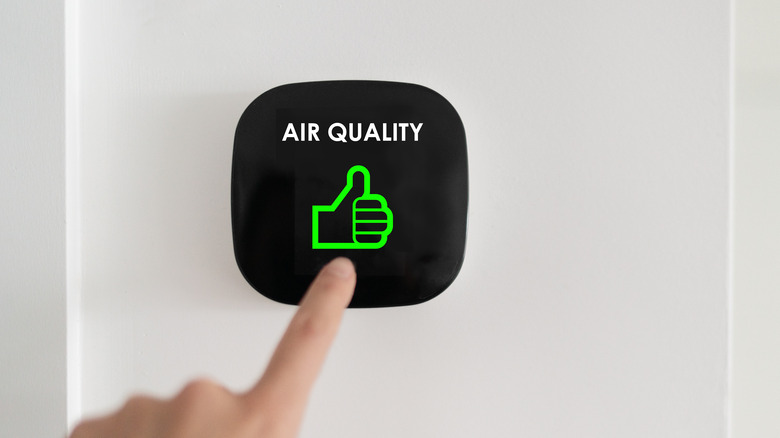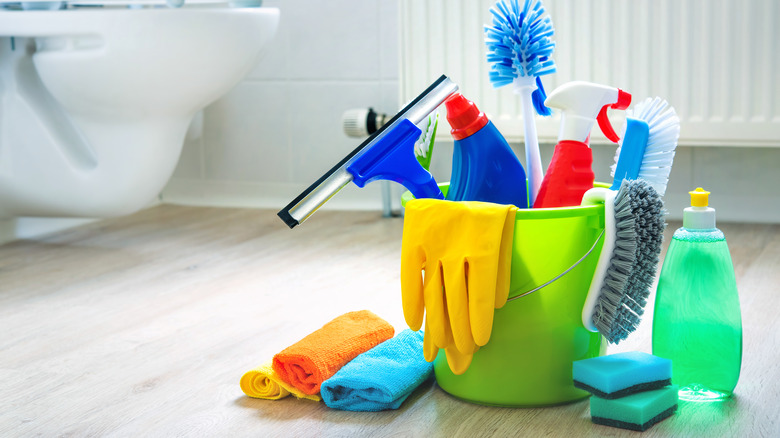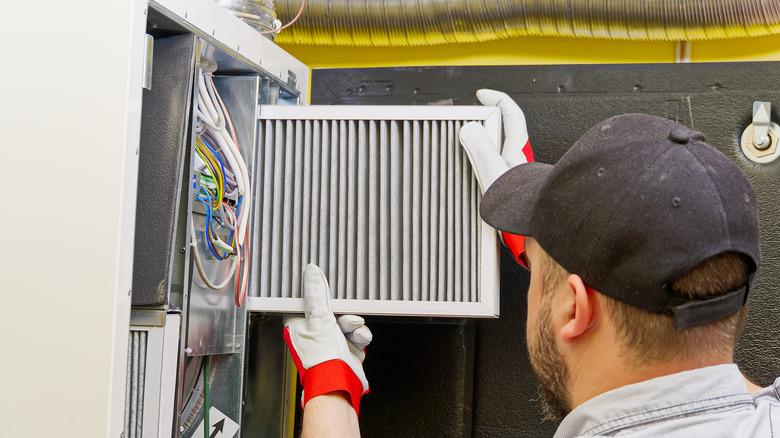Michael Rubino Explains How To Keep Your Indoor Air Quality Safe - Exclusive
Poor air quality isn't just an outdoor problem. While you might not be exposed to as much auto exhaust, soot, or industrial pollution at home, other invisible dangers may still be present. If you're vulnerable to allergies, you know that dust and pollen can make their way into your home's air and make you miserable. But even if you've never worried about allergies, household mold — even if hidden in a duct or attic — can wreak havoc on your home's air quality and cause serious illness.
"As a [mold] colony grows, it releases microscopic particles called spores into the surrounding environment," explained mold remediation specialist Michael Rubino. These spores, he said, can be inhaled, triggering the immune system to go into overdrive. This can cause a range of ailments, some serious.
Through his water and mold remediation business HomeCleanse and his latest initiative, the Change the Air Foundation, Rubino helps families return their homes to a safe condition. In an exclusive email interview with Health Digest, he shared his expert tips for keeping your indoor air quality safe and mold-free.
Controlling moisture stops mold growth before it starts
Household mold is not only ugly but also difficult to remove once established. "Mold grows roots called hyphae, so it can be difficult to remove from porous and semi-porous surfaces," Michael Rubino said. "The small size of spores and mycotoxins also allows them to reach deep within the fibers of the surface, making them difficult to remove."
To avoid mold problems, then, the ideal solution is to prevent mold from establishing itself in your home in the first place. Much of this, Rubino said, involves common-sense measures for consistently controlling moisture levels in your home, since mold thrives in moist environments and mold colonies can establish themselves in as little as 24 hours. Among his recommendations are fixing leaks as soon as possible, maintaining indoor humidity levels at between 35 and 50%, having flood controls installed and a drainage plan in place if you have a basement, and maintaining airflow in bathrooms by running an exhaust fan or keeping a door or window open.
Be proactive in purifying your indoor air
Household mold doesn't just stay on walls and inside moist spaces — its microscopic spores can settle into upholstery and other surfaces and drift unnoticed through the air. For this reason, Michael Rubino also recommends taking active measures to purify your indoor air. Some steps he recommends involve controlling airflow through the home, such as "making sure exhaust fans vent outside the home" and "keeping windows and doors closed while the AC is on."
It's also critical to have the right equipment to keep your air clean and ensure this equipment is properly maintained. Rubino recommends that homeowners schedule an HVAC technician to service their systems twice a year and that they "invest in air purification systems that will filter out the smallest particles possible all of the time, not just some of the time." He added that good filtration is critical to good air quality. "Upgrade to the highest-rated MERV filters the HVAC system can handle [and] change air filters on time," he said.
For more information on keeping your home's air quality safe, visit HomeCleanse and the Change the Air Foundation.



